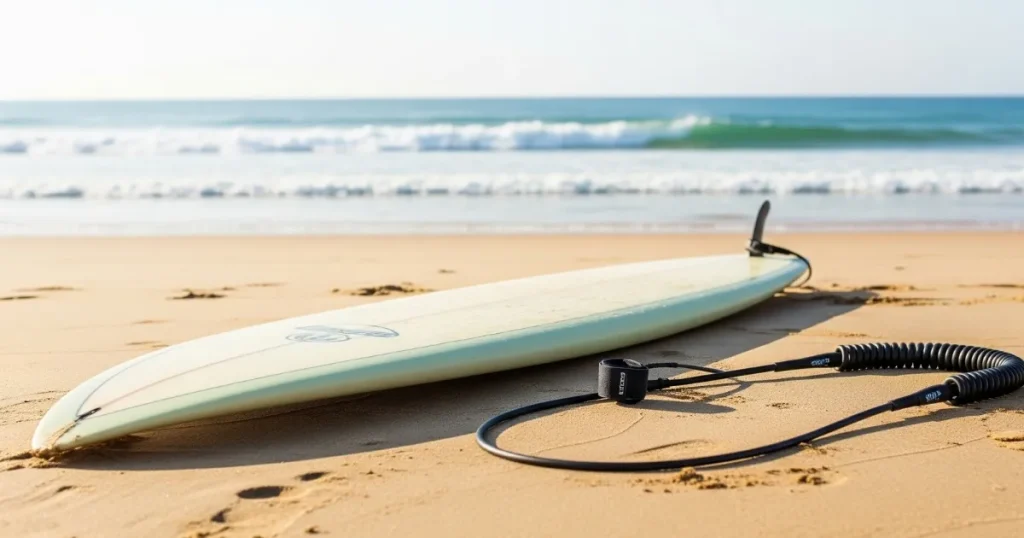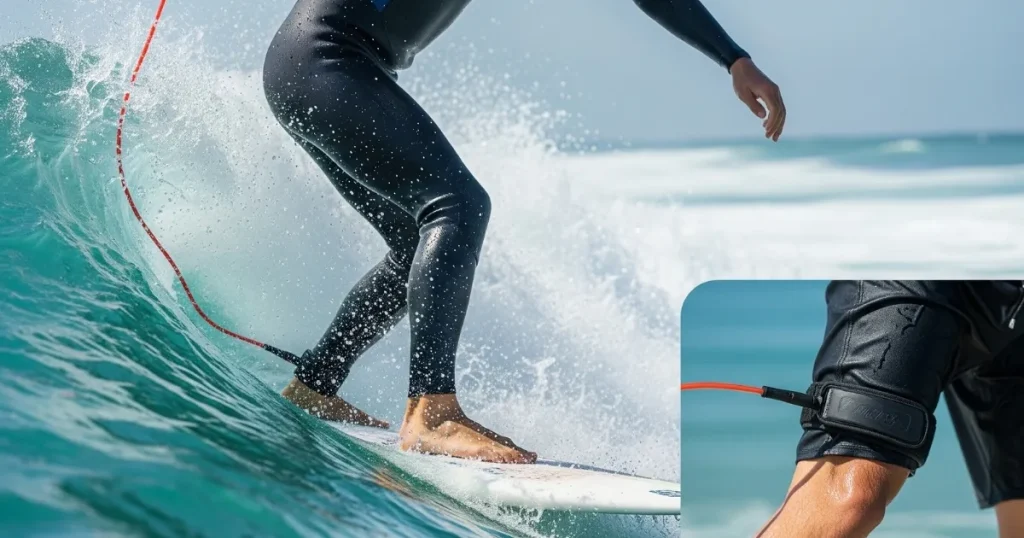Catching waves is an exhilarating experience, a dance between you, your board, and the ocean’s raw power. But even the most experienced surfers know that preparation is key to a great session. One often-overlooked yet incredibly vital piece of equipment is your surf leash. It’s your lifeline, preventing your board from drifting away in powerful currents or hitting other surfers.
Choosing the right leash isn’t a “one-size-fits-all” scenario. Just as you pick your board based on wave size and skill level, your leash needs to match the conditions. A poorly chosen leash can be a real buzzkill, leading to lost boards, frustrating swims, or even dangerous situations in crowded lineups. This guide will help you understand the nuances.
We’re going to dive deep into the world of surf leashes, exploring the various types available and why each design matters. We’ll cover everything from length and thickness to specific wave types, ensuring you’re always connected to your board. Our goal is to empower you with the knowledge to make smart choices.
At Surf Shop Cabo, we understand the importance of quality gear. We believe that a well-chosen leash enhances your safety and performance in the water. Let’s explore how to pick your perfect wave buddy, ensuring your next session is as fun and safe as possible, especially when considering surf leashes in Cabo.
The Anatomy of a Surf Leash: Length Matters

The length of your surf leash is perhaps the most critical factor to consider. As a general rule, your leash should be roughly the same length as your surfboard. This prevents the board from getting too far away in a wipeout, yet keeps it close enough to retrieve easily without becoming a dangerous projectile for others.
For instance, if you’re riding a 6’0” shortboard, a 6’0” leash is typically ideal. Going too long means your board can get dragged further by the current. It also increases the chances of the leash getting tangled around your legs or fins, which is definitely something you want to avoid while navigating a powerful wave.
Conversely, a leash that’s too short for your board can be just as problematic. It won’t give your board enough room to move freely during a wipeout, potentially snapping back and hitting you. This also puts unnecessary strain on the leash and the leash plug on your board.
Think about the specific board you’re riding and the conditions you expect. A proper length ensures your board stays close but doesn’t become a hazard. This balance is crucial for both your personal safety and the safety of those around you in the water, especially when dealing with the popular surf leashes in Cabo.
Thickness and Strength: Built for the Beast
Beyond length, the thickness of your surf leash cord plays a significant role in its strength and durability. Thicker cords offer greater resilience, making them suitable for larger, more powerful waves. However, they also create more drag in the water, which can subtly impact your paddling speed and performance.
Standard leashes typically range from 5mm to 7mm in thickness. A thinner, “comp” (competition) leash, usually around 5mm, is designed for small to medium waves and is favored by experienced surfers seeking minimal drag. These are great for improving your speed and agility on smaller days.
For everyday surfing in average conditions, a 6mm to 7mm leash offers a good balance of strength and minimal drag. This is a versatile option for most surfers and a wide range of wave sizes. It provides reliable security without feeling overly bulky or cumbersome in the water.
When the waves start to get serious, say overhead or bigger, you’ll want to step up to a “big wave” leash. These are typically 8mm or thicker. They are designed to withstand immense force, preventing your board from getting ripped away in powerful currents and ensuring you stay connected in critical situations.
Ankle vs. Calf: Finding Your Connection Point

The attachment point of your surf leash is another important consideration, primarily affecting comfort and maneuverability. The two main types are ankle leashes and calf leashes, each with its own advantages depending on your board and surfing style.
Ankle leashes are the most common and versatile choice, especially for shortboards and most longboards. They attach around your ankle with a comfortable cuff, keeping the leash out of the way and minimizing tangles. This placement is ideal for quick maneuvers and provides a direct connection to your board.
Calf leashes, on the other hand, are often preferred by longboarders, stand-up paddlers (SUP), and sometimes even foilers. They attach higher up on your calf, keeping the leash further away from your feet. This can be particularly useful for cross-stepping on a longboard, preventing the leash from getting underfoot.
For longboarders, a calf leash can reduce the chance of stepping on the leash during nose rides or turns. It offers a slightly different feel and can be more comfortable for some riders, especially those who spend a lot of time moving around on their board.
Ultimately, the choice between an ankle and calf leash comes down to personal preference and your specific surfing discipline. Try both if you have the opportunity to see what feels most comfortable and efficient for your style, especially when exploring the array of surf leashes in Cabo.
Swivels and Rail Savers: Enhancing Performance and Longevity
Two crucial components of a quality surf leash often go unnoticed: the swivels and the rail saver. These small but mighty features play a significant role in preventing tangles, protecting your board, and extending the lifespan of your leash.
Most modern leashes come equipped with double swivels, one at the cuff and one at the board attachment. These swivels allow the leash to rotate freely, preventing it from twisting and tangling around your leg or the board. A tangled leash can be incredibly frustrating and even dangerous in a wipeout.
The rail saver is a piece of webbing or neoprene that sits between the leash cord and your board’s rail. Its purpose is to distribute the force of a wipeout across a wider area, preventing the thin leash cord from cutting into or damaging the delicate rail of your surfboard.
Always ensure your leash has a robust rail saver that’s wide enough to adequately protect your board. A worn or inadequate rail saver can lead to expensive dings and repairs. Think of it as an insurance policy for your prized possession.
These details might seem minor, but they contribute significantly to the overall performance, safety, and longevity of your surf leash. Don’t underestimate their importance when making your selection.
Beyond the Basics: Leash Care and Maintenance
Choosing the right surf leash is just the beginning; proper care and maintenance are crucial for ensuring its longevity and reliability. A well-maintained leash will serve you faithfully for many sessions, keeping you and your board safe in the water.
After every surf session, always rinse your leash thoroughly with fresh water. Saltwater and sand can degrade the urethane cord and corrode the metal swivels over time. A quick rinse will remove these damaging elements and keep your leash in top condition.
Avoid leaving your leash exposed to direct sunlight for extended periods. UV rays can weaken the urethane, making it brittle and more prone to snapping. Store your leash in a cool, dry place away from harsh sunlight when you’re not using it.
Regularly inspect your leash for any signs of wear and tear. Look for cuts, nicks, or fraying in the cord, as well as any cracks or stiffness in the urethane. Check the swivels to ensure they rotate freely and aren’t corroded. The cuff and rail saver should also be in good condition.
It’s always a good idea to have a spare leash, especially if you surf frequently or in varying conditions. A backup ensures you’re never caught off guard by a broken leash, which can happen unexpectedly. Investing in quality and maintaining your surf leash properly will pay dividends in safety and enjoyment.

